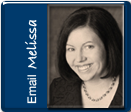 Do you find that you ever have too much month at the end of your money? Be honest, in the blink of an eye, extra money seems to vanish. For those still in their earnings years, one of the keys to accumulating wealth, thus achieving your financial objectives, is to stop the disappearing act. Transfer dollars from your monthly cash flow to your net worth statement by adding funds to your savings accounts, taxable investment accounts, and retirement accounts (such as employer sponsored 401k and 403b accounts) and IRA’s (Traditional or ROTH). Another smart move is to use funds from your monthly cash flow to pay down debt … also improving your net worth statement.
Do you find that you ever have too much month at the end of your money? Be honest, in the blink of an eye, extra money seems to vanish. For those still in their earnings years, one of the keys to accumulating wealth, thus achieving your financial objectives, is to stop the disappearing act. Transfer dollars from your monthly cash flow to your net worth statement by adding funds to your savings accounts, taxable investment accounts, and retirement accounts (such as employer sponsored 401k and 403b accounts) and IRA’s (Traditional or ROTH). Another smart move is to use funds from your monthly cash flow to pay down debt … also improving your net worth statement.
Saving money and improving your overall financial position is easier said than done. The truth is that saving money is more than simply a function of dollars and cents; it requires discipline and perseverance. You may have heard the strategy of “paying yourself first”. The most effective way to pay yourself first is to set up automatic savings programs. The 401k (or other employer plan) is the best way to do this – but you can also establish similar automated savings plans with brokerage companies and financial institutions such as banks or credit unions.
Just as important, be intentional with your 2012 spending. Rather than thinking in terms of a budget (which sounds a lot like dieting) – think about establishing a “spending plan” instead. Planning your expenses as best you can will help ensure that you spend money on the things that add value to your life and should help keep your money from mysteriously vanishing at the end of the month.
 For a free resource to help track your cash flow email: Timothy.Wyman@CenterFinPlan.com
For a free resource to help track your cash flow email: Timothy.Wyman@CenterFinPlan.com
Any information is not a complete summary or statement of all available data necessary for making an investment decision and does not constitute a recommendation. Any opinions are those of Center for Financial Planning, Inc., and not necessarily those of RJFS or Raymond James.














